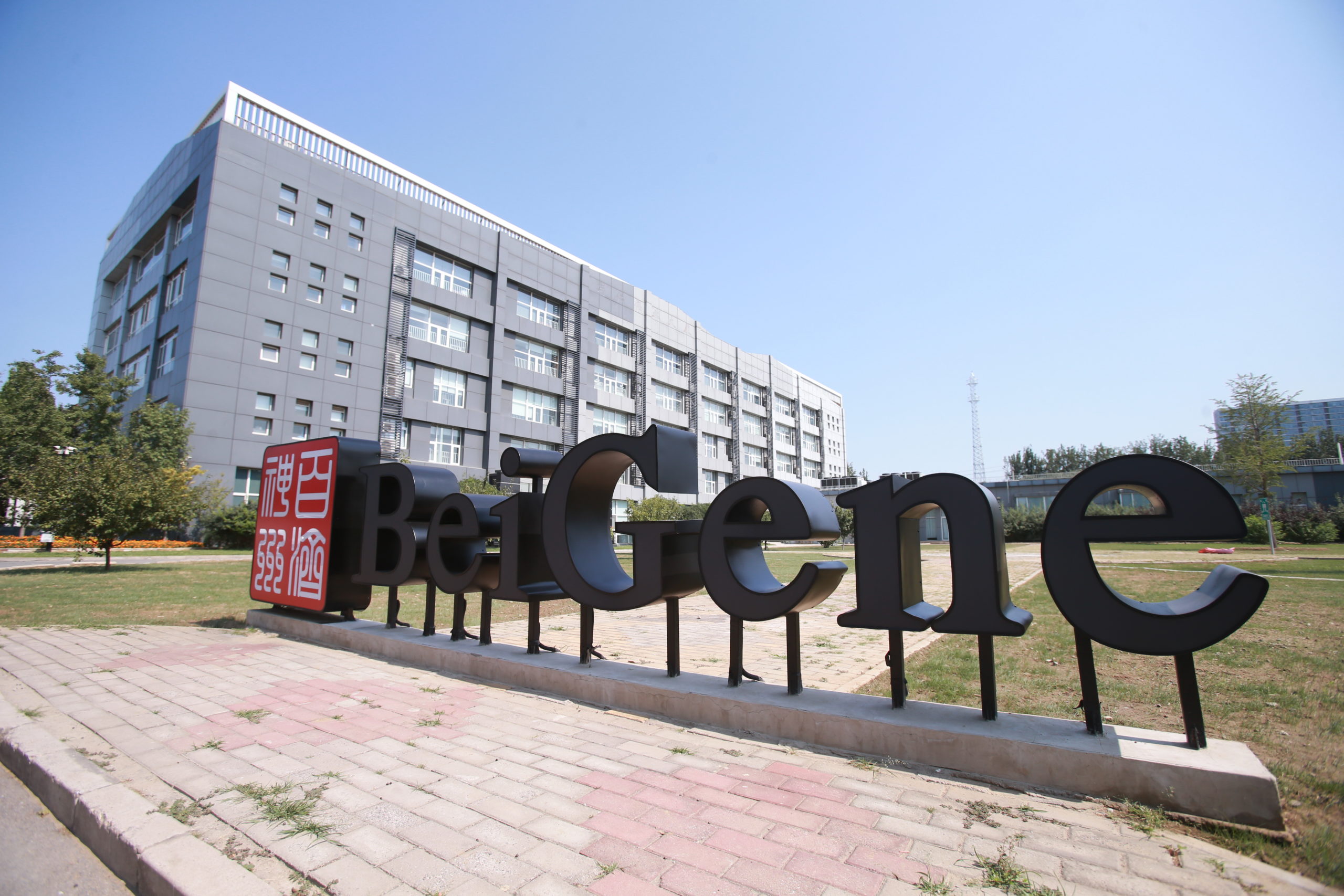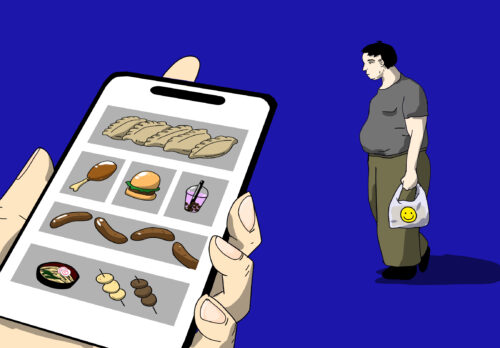China bids on biotech to cure cancer and move beyond reliance on foreign drugs
Drugs made in China might provide the world’s next cancer treatment breakthroughs, powered by returnee scientists, government incentives, and floods of venture capital.

China has one-fifth of the world’s cancer patients, but as of 2020, only 40.5% of them survived for five or more years after being diagnosed, according to China’s National Health Commission. In comparison, 67% of Americans diagnosed with cancer lived for at least five years between 2009 and 2015, according to the American Cancer Society. The new generation of biological drugs that significantly increase cancer survival rates are predominantly made by U.S. and European pharmaceutical giants, which offer international prices that ordinary Chinese patients cannot afford.
The tide began to turn after four Chinese biotech companies created domestic versions of the innovative biological drugs known as PD-1/PD-L1 inhibitors, which showed outstanding results in empowering the immune system to fight cancer. The Chinese companies offer slashed prices in China, the world’s second-largest pharmaceutical market, and are set to sell the “Made in China” cancer therapies to American patients.
There are three factors transforming China’s biotech sector from copycat to innovator (at least in some fields):
- Regulatory reform
- Surging investment from public and private sectors
- Scientists returning from overseas to found companies or head research projects in China
These have led to what one entrepreneur compared to a “Cambrian Explosion”-like boom in new biotech startups, many of which now produce innovative drugs or medical equipment the likes of which had previously all been imported or licensed from the West. The U.S.-China trade war has further pushed Beijing to step up efforts in building technology self-reliance after Washington imposed export control on key electronic components that are essential for the country’s economic growth, especially semiconductors.
Self-reliance in cancer treatments
“The trend of technology self-reliance certainly applies to biotech as well,” Scott Moore, the director of the Penn Global China Program at the University of Pennsylvania, told The China Project. He wrote in a recent report that China’s policy framework for biotechnology has increasingly prioritized domestic capacity building in the past decade, stating, “Policy guidance has steadily shifted over time to emphasize self-reliance and indigenous innovation over technology transfer.”
Pharmaceuticals make up the single-largest segment of the biotechnology sector in most countries, including China. By using living organisms or compounds obtained from living organisms, China’s biotechnology sector produces innovative drugs, therapies, and treatment methods to meet the country’s immediate needs to treat non-communicable diseases like diabetes and cancers, which are growing more prevalent as the country grows older and richer.
Beijing listed biotechnology as one of the 10 key sectors under the “Made in China 2025” industrial strategy that aims to transform China’s manufacturing sector. The central government issued a supplementary guidance for biotech (in Chinese) under the country’s 13th Five-Year Plan in 2017, and set specific targets for “cultivating biotech high-tech enterprises and new industries” and forming “internationally competitive biopharmaceutical industry clusters.”
“It’s pretty clear that biotech will be a major driver of future economic growth, and China’s policymakers are following that signal,” Scott Moore told The China Project. He said China’s biotech industry remains dependent on foreign technology transfer for high-end products, but has built capable domestic capacity in mature sub-sectors like pharma.
“I would expect to see biotechnology further prioritized in the 14th Five-Year Plan,” Moore said. “I would also expect to see a big emphasis on improving the quality of biomedical research.”
Venture capital + government largesse
With strong state backing and targets to meet, the government is spending more on research and development in the pharmaceutical sector, with $9.44 billion in 2019 alone. China invested $342 billion in science and technology research and development in 2019, half of which are from central and local governments, according to official figures (in Chinese). China’s R&D spending is only second to that of the U.S., which spent $580 billion in 2018.
The capital market players, including venture capitalists and private equity, invested roughly $12.3 billion into biotech from 2017 to 2019, according to Equal Ocean (in Chinese), a Beijing-based research firm. In the U.S., where the vast majority of R&D spending is from the industry, venture capitalists and private equities invested $12.6 billion in biotech for the first half of 2020 only.
China faces a rapidly aging population and significant unmet medical challenges, particularly in cancer, diabetes, and neurology. To address the healthcare challenges, China’s regulatory change in 2015 greatly relaxed approval and clinical trial requirements for drugs of unmet medical needs. Both foreign and domestic companies expanded their market access, but China’s drug candidates enjoy a fast-track review process and greatly reduced wait times compared with their international competitors.
Boosted by the government and the capital market, China now has 663,000 biotech companies, nearly half of which were registered in the past six years, according to QiChaCha (in Chinese), a corporate records database.
Over 20 Chinese biotech companies are publicly traded in Hong Kong, Shanghai, and New York, the vast majority of which had their initial public offerings within the past four years. Among them are Cansino Biologics, developer of a leading COVID-19 vaccine candidate that is undergoing Phase 3 clinical trials in Mexico, and three biotech startups that produced the domestic versions of the new anticancer biological drugs known as PD-1/PD-L1 inhibitors.
Foreign companies losing out
In the latest round of negotiations with the Chinese health authority, where pharmaceutical firms sought to be added into the National Reimbursement List of drugs covered by the national medical insurance system to reach over 1.3 billion citizens, PD-1/PD-L1 candidates from three domestic companies, BeiGene, Junshi Bio, and Innovent Bio, won their places, although with an 80% cut in prices.
Global pharmaceutical leaders such as America’s Merck and AstraZeneca from the U.K. couldn’t offer steep discounts like their Chinese competitors, and lost their opportunity to reach millions of cancer patients who may not be able to afford treatment to survive without the state reimbursement.
Competition to provide the new cancer drug was less fierce in 2019, as only two domestic players that could produce the innovative drug participated. In 2020, with two newly approved domestic drug candidates and lower production costs, Chinese companies made it nearly impossible for international players to be included in the reimbursement list without great concessions over pricing.
The dream of Made in China drugs
Founded in 2010, BeiGene is the oldest of the three and now publicly traded in Nasdaq and Hong Kong. BeiGene, Junshi Bio, and Innovent Bio were all founded by Chinese-American or Chinese scientists who have extensive experience working in top U.S. universities and medical research institutes.
Roughly 7,000 Chinese-born researchers returned to China between 2008 and 2017 under the Thousand Talents Plan, which is now under extensive U.S. government scrutiny due to intellectual property theft concerns. More than 1,400 of them specialized in life sciences, a former secretary-general of the talent program told Nature. They are at the center of China’s effort to achieve biotech independence. Both BeiGene’s and Innovent Bio’s founders are Chinese-American scientists who returned with the support of the Thousand Talent Plan.
Innovent Bio founder Michael Yu, or Yú Déchāo 俞德超, returned to China in 2006 and holds 60 patents, including 38 in the U.S. Yu founded the company in 2011, and, only four years later, struck a $56 million deal with America’s pharmaceutical giant Eli Lilly to co-develop three cancer drugs, the largest for a Chinese drug firm.
“‘Made in China’ products are everywhere in Europe and the U.S., but it’s especially hard to find ‘Made in China’ drugs,” Yu said in an interview with Xinhua (in Chinese). Yu said he returned with the intent of producing first-class biological drugs in China.
BeiGene now operates a biological drug production facility in Suzhou, and is building a second production base in Guangzhou in southern China. BeiGene’s vice president, Líu Jiàn 刘建, told Chinese media last month that, to further lower the production cost, the company aims to reduce the use of foreign material to 30% in the Guangzhou factory from the the current 70%. “(We will) localize key materials, and internalize key technologies,” Liu said.
Although China is still catching up with the West in most biotech fields, it has become globally competitive in a few areas, notably in the chimeric antigen receptor cell therapy, or CAR T. Thanks to the lower manufacturing cost and favorable regulations, China has surpassed the West in developing the experimental therapy to treat blood cancers, with American patients traveling to China to seek treatment.
“The first shoots of homegrown drug discovery and development are emerging,” the Nature Biotechnology journal wrote in an editorial. “China is set to challenge the pre-eminence of the U.S. drug market.”






